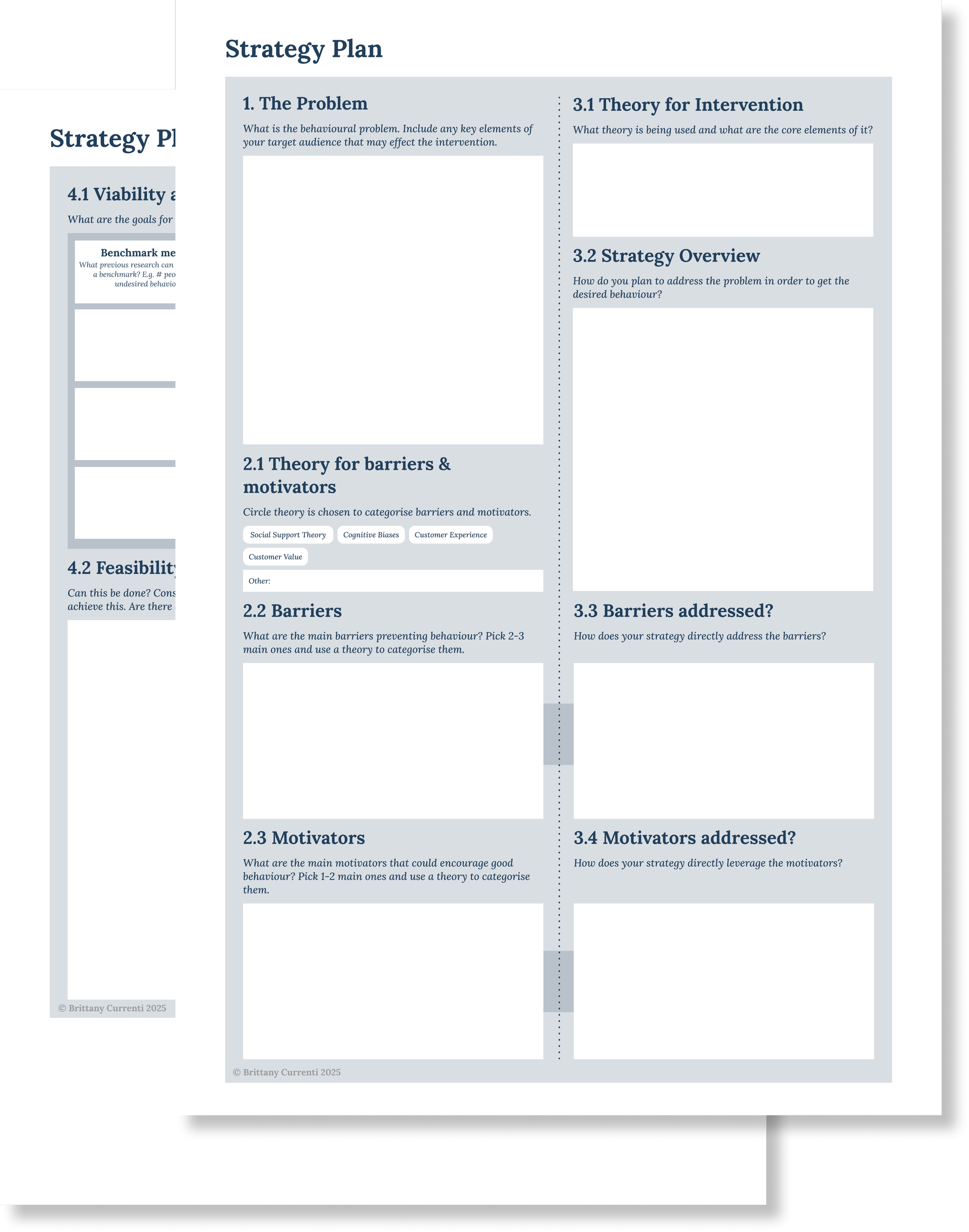Know how to Implement Theory (KIT) framework
We know theory-based strategies work but how do you actually apply them for behaviour change?
Here you’ll find free resources created by a hybrid practitioner-academic, including a curated list of generalisable behaviour change theories with explanations, and a template for implementing theory in a behaviour change strategy.
Tested with first year students and in the workplace, these resources make implementing theories quick and easy for anyone to do.
KIT framework resources © 2025 by Brittany Currenti is licensed under CC BY-SA 4.0. This license requires that users give credit to the creator. See terms and conditions of use.
Behaviour Change Strategy Template
A step by step template for how to implement theory into a behaviour change strategy. Includes a blank template and an example.
Curated Card Deck of Theories
A selection of simple, intuative theories that are useful for behaviour change strategies. Guidance is provided as to when to use them and how.
How to Use Behavioural Science: Step by Step Guide for Practitioners
00:00 Who I am (behavioural scientist background & lens)
00:29 The theory behind the theory-based approach (academic KIT paper and research)
14:51 Step-by-step: How to use the free tools (walkthrough of the Theory Card Deck + Strategy Template)
Winner of the Best Student Paper Award
At the 2025 International Social Marketing Conference | Canberra, Australia




